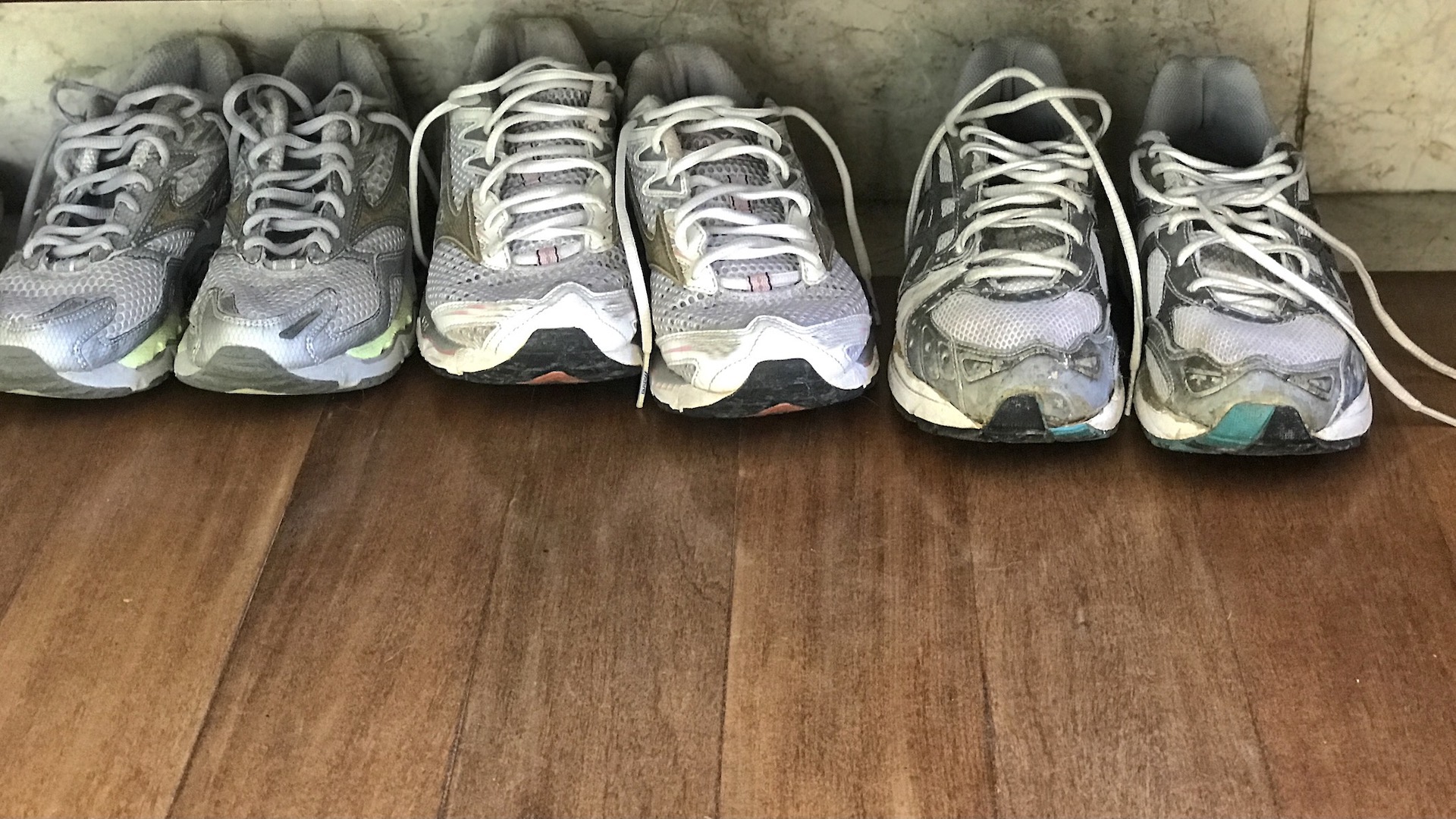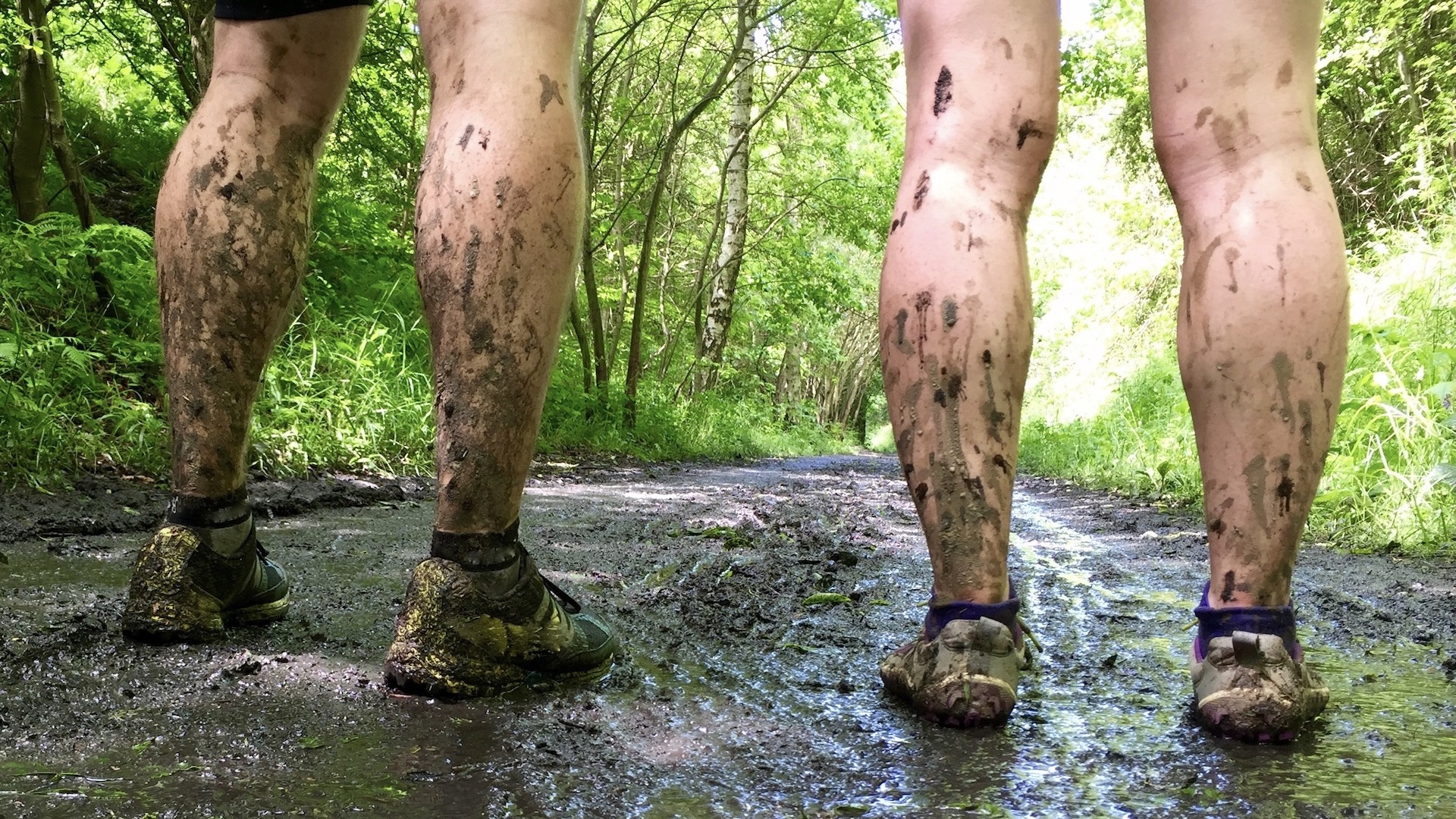How often should you replace running shoes?
If you are a road or trail runner, you can follow this guide to ensure you know when the time is right to change your footwear

The question of how often should you replace your running shoes is commonly asked by runners and the answer is, it depends. While figures of between 300 and 500 miles are usually suggested for the life of a running shoe, whether your favourite trail running shoe or road running shoe, there are a number of factors that will influence the wear and tear of footwear.

Factors that influence when you should replace running shoes
There are different influences and factors that will determine when is the right time to replace running shoes.
What's the terrain?
You should buy running footwear to suit the terrain that you will predominantly run on. In fact, it’s a good idea to choose the best trail running shoes for off-road terrain and the best road running shoes for tarmac.
But in reality, you will end up running on a mix of terrain and this will affect how the running shoes wear.
Running on rocky terrain and on stoney paths will reduce the lifespan of a shoes because this type of ground is rough on the soles. Running through thick vegetation or in areas where there is a lot of abrasion on the uppers will also affect how long the footwear lasts.
It’s a good idea to keep an eye on the wear of your running footwear, especially the soles, to decide when you should replace your running shoes.
Also, if you start to slip on steep, wet or muddy terrain then you should look at the soles of the running shoes. Maybe the lugs have worn down and that means you should replace your running footwear.
Advnture Newsletter
All the latest inspiration, tips and guides to help you plan your next Advnture!
Your running gait
How you run, that is, your running gait type, will affect when you should replace your running shoes. Different foot strikes will wear the sole in different ways and this could lead to an uneven shoe in the end.
Take a look at the sole of your running shoes and see where they are most worn.
Although the rest of the shoe may look fine, if the heel, forefoot or edge of the sole of the running shoe is worn down excessively, the stability and support of the foot and ankle may be compromised.
Knowing when you should replace your running shoes will avoid the potential risk of injury from worn soles.
Runner’s weight
One of the biggest factors in knowing when to release your running shoes is how much you weigh or what your build is.
Being heavier means that a shoe is far more likely to wear down. Also, if you are taller than average, you may well be naturally heavier. The cushioning will take more of a hit if you weigh more than average and the soles will take more of a pounding. This means, you may need to replace running shoes more frequently.
The material of the shoes
There are some fabrics and materials that are more robust than others. For example, shoes that include graphene, which is lightweight and very tough, will last longer than shoes with a sole made of a softer material.
However, just because one part of a shoe is longer lasting it doesn’t mean you won’t need to replace them because there will be other components, such as fabric uppers, that will wear out.
Minimalist style running shoes, with fewer details, such as protection rands and toe caps, may well wear out before running shoes made with lots of added details for durability.
There is no hard and fast rule and you will get to know which shoes last longer and which brands make more durable running shoes, but it’s worth being aware of the materials that are being used in running shoes.

How often should you replace running shoes? Telltale signs
If you're wondering whether you need to replace your running shoes, there are a few telltale signs to look out for:
Injuries and niggles
While injuries can be caused by all kinds of issues, such as over training, running on unfamiliar terrain and building up too quickly, sometimes a niggle will start with running shoes in disrepair.
Shin splints, for example, are common complaints and many people find that replacing their running shoes with new footwear helps with the issue.
How do the shoes feel?
One of the best ways of knowing how often should you replace running shoes, is how they feel. If you are a fairly experienced runner you will know how you shoes should feel. For example, how the cushioning feels, whether the grip is still good and if the uppers are still supporting your feet.
Seek advice
If you are new to running, or you are simply unsure about whether to replace your footwear, you can ask an expert. Head to a sports shop that you trust and let them take a look at the shoe.
There are many factors that will determine how often should you replace running shoes, but it is important to keep an eye on them both for physical benefits and for safety when running on tricky terrain.

Fiona Russell is a widely published adventure journalist and blogger, better known as Fiona Outdoors. She is based in Scotland and is an all-round outdoors enthusiast with favorite activities including trail running, mountain walking, mountain biking, road cycling, triathlon and skiing (both downhill and backcountry). Aside from her own adventures, Fiona's biggest aim is to inspire others to enjoy getting outside and exploring, especially through her writing. She is also rarely seen without a running skort! Find out more at Fiona Outdoors.
